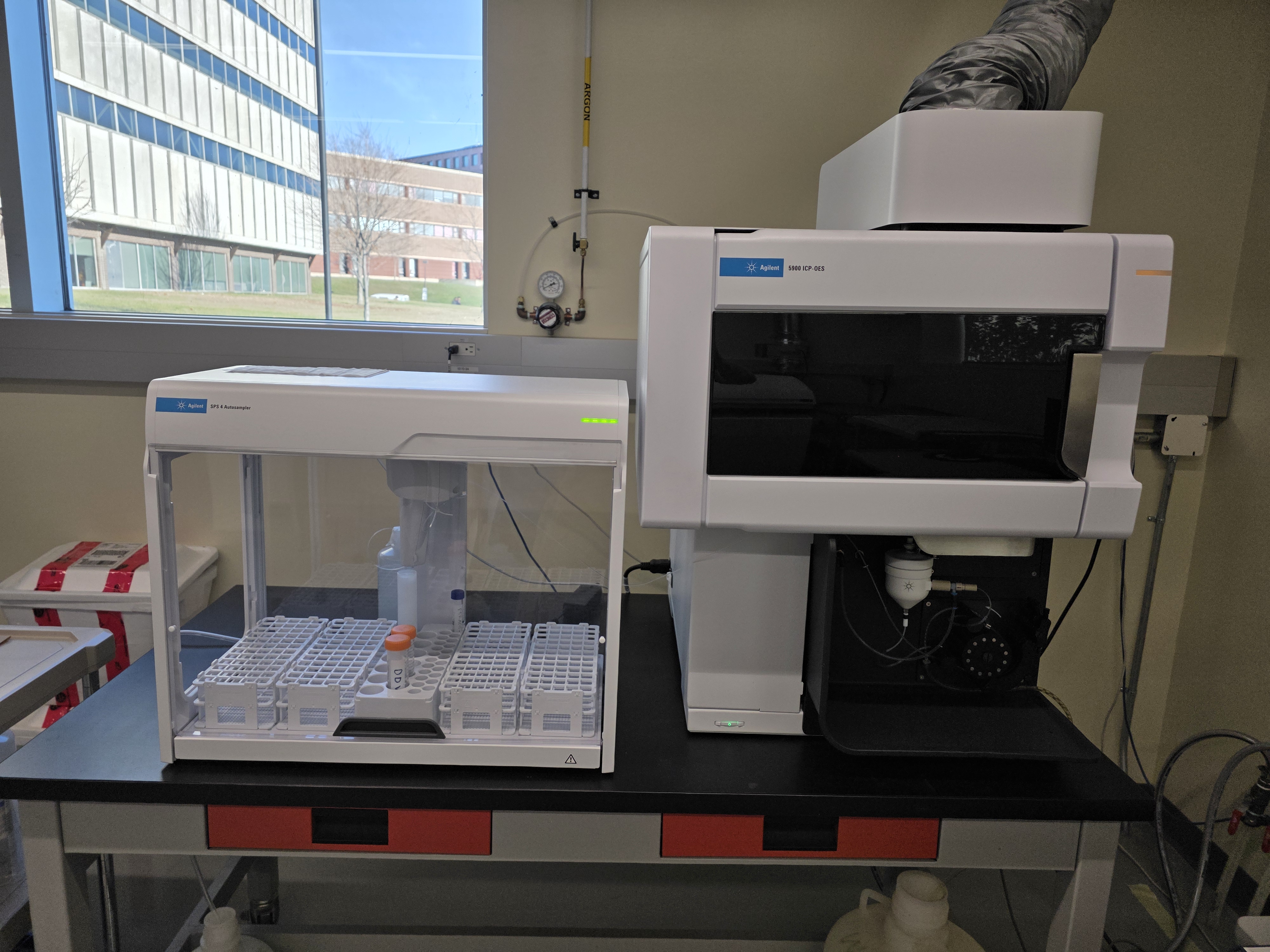ICP-AES: Agilent 5900 SVDV, ICP-OES Spectrometer
Equipment
The ICP-AES (Inductively coupled plasma atomic emission spectroscopy) is a widely used elemental analyzer with many applications including soil and water analysis, detecting trace elements in pharmaceuticals and determining elemental composition of rocks.

Theory of Operation
Samples held in solid solution are put through a nebulizer to convert the liquid to an aerosol. The sample is moved through an argon torch, which by radio frequencies and argon gas are used to make an argon plasma. This is extremely hot (10,000 K) and breaks molecules down into individual atoms. These atoms are then excited to a higher energy level. Upon returning to their original state, they emit a characteristic wavelength unique to that particular element which can be measured and separated from other elements by a grating to disperse the light. The intensity of the wavelength is what allows us to perform quantitative analysis when compared to a known standard.
Sample Preparation
ICP-AES analysis requires samples to be in solution. Water samples can easily be analyzed, whereas rocks must be dissolved using various methods of acid digestion. If hydrofluoric acid is involved, silicon data will not be reliable as it is volatized when it comes into contact with hydrofluoric acid.
Also, check out our Technical Bulletin which discusses the differences between ICP-AES and ICP-MS.

